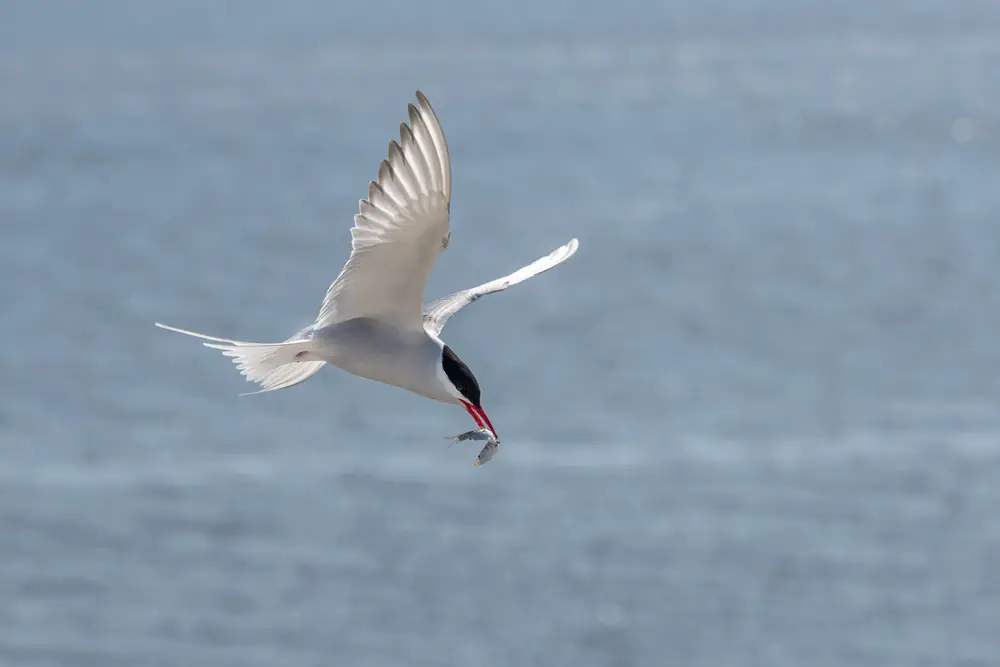The Arctic tern (Sterna paradisaea) is known for its remarkable long-distance migration, which has earned it the title of the world’s longest bird migration. This migratory journey spans a staggering distance of approximately 44,000 miles (70,900 kilometers) roundtrip from its breeding grounds in the Arctic to its wintering grounds in the Antarctic.
The purpose of this article is to explore the factors that contribute to this extraordinary feat and shed light on the challenges faced by Arctic terns during their transcontinental journey. Additionally, this article will discuss the adaptations that enable these birds to undertake such extensive travel and examine the underlying reasons behind their seasonal migrations.
Finally, an overview of conservation efforts aimed at protecting and preserving the Arctic tern population will be provided. Understanding and appreciating this impressive avian migration not only contributes to our knowledge of wildlife behavior but also highlights the importance of safeguarding these incredible journeys for future generations.
The Arctic Tern’s Migration Route
The Arctic Tern’s migration route spans from the Arctic to the Antarctic, making it one of the longest bird migrations in the world, captivating enthusiasts with its awe-inspiring journey across vast distances.
This remarkable migratory behavior is driven by the search for suitable nesting grounds and abundant food sources. The Arctic terns breed in the Arctic region during the summer months, taking advantage of its relatively high abundance of resources.
After nurturing their chicks, these birds embark on an astonishing journey southward towards the Antarctic region as winter approaches. Along this migratory route, they encounter various feeding opportunities, such as fish and plankton-rich areas found in coastal regions or open ocean waters.
By adapting to diverse environments and utilizing different food sources along their migration path, these resilient birds are able to sustain themselves during their epic journey spanning thousands of miles.
The Challenges Faced by Arctic Terns
Migration is a formidable undertaking, as Arctic Terns face numerous challenges during their journey. These challenges include the following:
- Navigation: The Arctic Tern’s migration route spans over 44,000 miles, and they rely on their remarkable navigational abilities to find their way. They use celestial cues, magnetic fields, and landmarks to navigate across vast distances.
- Feeding habits: During their long migration, Arctic Terns need to find suitable feeding grounds along the way to sustain themselves. They primarily feed on small fish and invertebrates found in the open ocean. Finding these food sources can be challenging as they need to locate areas with abundant prey.
- Environmental factors: Arctic Terns encounter harsh weather conditions during their migration, including storms and strong winds that can impede their progress. They also face threats from predators such as gulls and falcons throughout their journey.
Despite these challenges, Arctic Terns have evolved remarkable adaptations that allow them to complete one of the world’s longest bird migrations successfully.

Adaptations for Long-Distance Travel
Adaptations for long-distance travel include remarkable navigational abilities, the ability to locate suitable feeding grounds, and the capacity to withstand harsh environmental conditions. Bird physiology plays a crucial role in enabling arctic terns to undertake their extensive migrations. These birds have evolved physiological adaptations that allow them to efficiently utilize energy during flight. For instance, they possess a high metabolic rate and enhanced oxygen-carrying capacity, which aids in sustained flight over long distances. Additionally, arctic terns possess specialized muscles that enable them to maintain continuous wing flapping without tiring easily.
In terms of navigation techniques, arctic terns rely on a combination of celestial cues and landmarks. They are able to navigate using the earth’s magnetic field as a compass, sensing changes in its intensity and inclination angle. Furthermore, these birds also use visual landmarks such as coastlines or mountain ranges to orient themselves during their journeys. By utilizing these adaptations and navigation techniques, arctic terns successfully complete the world’s longest bird migration every year.
Reasons Behind the Arctic Tern’s Migration
One of the fascinating aspects to explore about the Arctic tern’s annual journey is the underlying reasons behind its remarkable migration. The Arctic tern undertakes the world’s longest bird migration, traveling from its breeding grounds in the Arctic regions to its wintering grounds in Antarctica. Understanding the reasons behind this immense journey requires an examination of migration patterns and navigation techniques employed by these birds.
Migration patterns observed in Arctic terns are influenced by factors such as habitat availability, food availability, and climatic conditions. These birds follow a predictable route, known as a flyway, which enables them to navigate long distances with precision. They rely on various navigational cues such as landmarks, celestial cues (such as the position of the sun and stars), magnetic fields, and even olfactory cues.
Conservation Efforts for the Arctic Tern
Conservation efforts aimed at safeguarding the Arctic tern’s annual journey have been implemented to protect this remarkable species and ensure its continued survival. The Arctic tern faces various threats and vulnerabilities during its migration, including climate change, habitat loss, pollution, and predation. To mitigate these challenges, several conservation measures have been put in place.
- Protection of breeding grounds: Conservation organizations work towards preserving the pristine breeding sites of the Arctic tern by establishing protected areas and regulating human activities in these regions.
- Education and awareness: Efforts are made to raise public awareness about the importance of the Arctic tern’s migration and its ecological significance through educational campaigns, workshops, and outreach programs.
- International collaboration: Governments and conservation organizations collaborate on a global scale to develop international agreements for the protection of migratory birds like the Arctic tern.
These conservation initiatives aim to address the threats faced by the Arctic tern population while ensuring that future generations can continue to marvel at this incredible bird’s epic journey.


